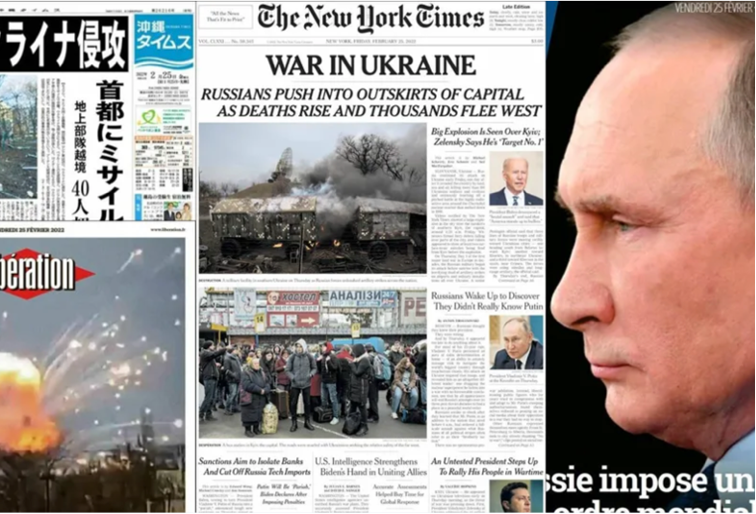February 24, 2022: Wall Street and the Sound of War

The 48 hours following Russia's invasion of Ukraine saw Wall Street record its best performance in 14 months. Why?
Key Dates:
- November 10, 2021: The U.S. government reports Russian troops near Ukrainian borders.
- November 28: The U.S. announces 92,000 Russian soldiers at Ukraine's borders.
- December 17: Putin demands a formal refusal of Ukraine's NATO membership.
- January 3, 2022: The Dow Jones 30 reaches its highest historical peak.
- January 12: U.S. inflation hits 7%.
- January 17: Russian troops are reported in Belarus.
- January 19: The U.S. provides Ukraine with $200 million in security aid.
- January 25: Russian exercises take place in Russia near Ukraine and Crimea.
- February 10: Russia and Belarus begin ten days of military maneuvers.
- February 10: U.S. inflation reaches 7.5%.
- February 17: Fighting intensifies in the separatist regions of eastern Ukraine.
- February 21: Vladimir Putin announces Russia recognizes the independence of two pro-Russian breakaway regions in eastern Ukraine.
- February 24: Offensive begins.
This context highlights the escalating tensions leading up to the invasion, alongside the financial market's responses during this critical period.
In the weeks leading up to February 24, 2022, and Russia's invasion of Ukraine, major U.S. stock indices were trending downward. Due to rising inflation, markets anticipated an increase in interest rates by the Federal Reserve. The escalating tensions between Russia and Ukraine further darkened economic prospects. However, on February 24 and 25, as the conflict began, American markets rebounded. This might seem perplexing, but Wall Street simply adhered to the old adage: “Buy on the sound of cannon, sell on the sound of bugle”.
Irrational Exuberance?
In Europe At 5:48 AM on February 24, Vladimir Putin announced the beginning of a "special operation" in Ukraine during a televised statement. Just three days prior, he had recognized the independence of the separatist territories of Donetsk and Luhansk.
News channels continuously broadcast images of the bombings, while major newspapers around the world feature the event on their front pages.
In the night of February 24, Ursula von der Leyen announced major sanctions targeting Russia. Key measures included:
- Exclusion of Russia from major capital markets: “We are now targeting 70% of the Russian banking market, as well as key state-owned enterprises, particularly in the defense sector.”
- Ban on importing Russian oil into the EU.
- Limited access to critical technologies, such as semiconductors and advanced technologies.
Joe Biden also announced severe economic sanctions against the Russian economy and expressed the political intent to make Vladimir Putin a pariah on the international stage.
The general atmosphere reflected concerns about security and economic consequences.
The newspaper Le Monde headlined
War in Ukraine: Oil, Wheat, and Aluminum Prices Soar; Stock Markets Crash,” on February 24. The article reported: “European stock markets plummeted at the opening on Thursday, February 24, just hours after Russia launched a military offensive in eastern Ukraine. At the opening, Paris fell by 4.19%, Frankfurt by 4.39%, and London by 2.55%. The Euro Stoxx 50, the benchmark European index, lost 3.52% on very high trading volumes. Asian markets also took a hit, from Hong Kong (-3.24%) to Shanghai (-1.70%) and Tokyo (-1.81% at close). In Moscow, the market plunged over 30% while the ruble fell to a historically low level against the dollar.
In New York It is in this atmosphere that the New York Stock Exchange opens on February 24. The offensive in Ukraine has been underway for over 10 hours. While concern is palpable in Europe, one might expect uncertainty regarding companies heavily reliant on the energy, transportation, or mineral sectors to lead to a sell-off. However, the opposite occurs. On February 24, the Dow Jones opens at 32,830 points and closes at 33,223 points. The following day, February 25, it opens at 33,277 points and finishes at 34,058 points, marking a cumulative increase of almost 4% over the two days.